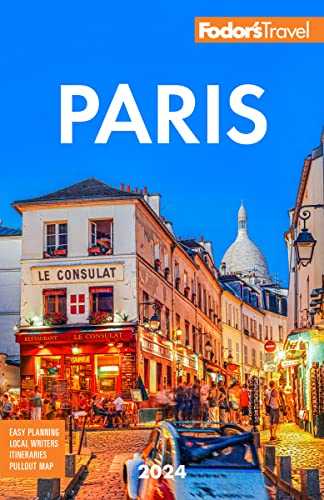Bus Travel
Arriving and Departing Paris
The excellent national train service in France means that long-distance bus service in the country is practically nonexistent; regional buses are found where train service is spotty. Local bus information to the rare rural areas where trains do not go can be obtained from the SNCF .
The largest international bus operator here is Eurolines, whose main terminal is in the Parisian suburb of Bagnolet (a ½-hour métro ride from central Paris, at the end of métro Line 3). It runs to more than 600 cities in Europe. The price of a round-trip bus ticket can be as much as 50% cheaper than taking a train or plane, so if you have the time and the energy, this is a good way to cut the cost of travel.
Eurolines provides bus service from London's Victoria Coach Station, via the Dover–Calais ferry, to Paris's Porte de Bagnolet. There's at least four trips a day—more in summer— between 8:30 am and 10:30 pm. Travel time is about seven hours. Fares start at €38 round-trip. The company also offers a discounted "minipass" between two European capitals, plus a 15-day pass (€225–€320), and a 30-day pass (€340–€425). Check the Eurolines website for special discounts or incentives. The earlier you buy your ticket, the cheaper it will be. Reservations for international bus trips are essential.
In Paris
With dedicated bus lanes now in place throughout the city—allowing buses and taxis to whiz past other traffic mired in tedious jams—taking the bus is an appealing option. Although nothing can beat the métro for speed, buses—eco-friendly electric and diesel-electric hybrids—offer great city views, and air-conditioning is a nice perk on sweltering August days.
Paris buses are green and white; the route number and destination are marked in front, and major stopping places are noted along the sides. Glass-covered bus shelters contain timetables, and route maps, and most have electronic boards telling you how long you'll wait for your ride; note that buses at stops servicing multiple lines must be hailed. Smaller stops are designated simply by a pole bearing bus numbers.
Today more than 350 bus routes thread throughout Paris, reaching virtually every nook and cranny of the city. On weekdays and Saturday, buses run every 5 to 10 minutes, but you'll have to wait 15 to 20 minutes on Sunday and holidays. One ticket will take you anywhere within the city and is valid for one bus transfer within 90 minutes.
Most routes operate from 6:30 am to 10:30 pm, some until 12:30 am. After 12:30 am you must take either the métro, which begins shutting down at 12:40 am Sunday through Thursday and 2:15 am on Friday, Saturday, and on major holidays, or one of the Noctilien lines (indicated by a separate signal at bus stops). Using the same tickets as the métro and regular buses, 48 Noctilien buses operate every 15 to 60 minutes (12:30 am–5:30 am) between Châtelet, major train stations, and various nearby suburbs; you can hail them at any point on their route.
A map of the bus system is on the flip side of every métro map, in all métro stations, and at all bus stops. Maps are also found in each bus; a free map is available at RER stations and tourist offices, or download the RATP app on iTunes or www.ratp.fr. An onboard electronic display announces the name of the next stop. To get off, press one of the red buttons mounted on the silver poles that run the length of the bus, and the arrêt demandé (stop requested) light directly behind the driver will light up. Use the middle or rear door to exit.
The Balabus—an orange-and-white public bus that runs on Sunday and holidays from 1:30 pm to 8:30 pm, April through September—gives an eye-catching 50-minute tour around the major sights. You can use your Paris-Visite or Mobilis pass, or one to three bus tickets, depending on how far you ride. The route runs from La Défense to the Gare de Lyon.
The city has expanded its modern tram system with several lines linking the city with its outer suburbs; line T3 (with extensions 3a and 3b) ring Paris from the southern edge at Pont du Garigliano to Porte de la Chapelle in the north. One ticket is good for the entire line.
Trams and buses take the same tickets as the métro. When buying tickets, your best bet is a carnet of 10 tickets, available for €14.90 at any métro station. A single ticket can be bought on board for €1.90 (exact change appreciated). If you have individual tickets or Paris-Visite passes, you should be prepared to validate your ticket in the gray machines at the entrance of the vehicle. You can also buy tickets in some bar–tabac cafés.
Bus Information
Eurolines. 08–92–89–90–91; 0033/0033–141–86–2421; www.eurolines.fr.
Noctilien. www.ratp.fr/en/getting-around-night/its-easy-get-around-night.
RATP. 3246; www.ratp.fr.




